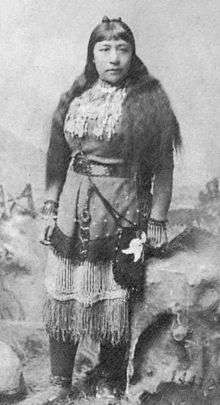Formative stage
In the classification of archaeological cultures of North America, the Formative Stage or "Neo-Indian period" is an archaeological term applied to theoretical North and Meso-American societies, cultures that existed between 1000 BCE and 500 CE. It is the third of five stages defined by Gordon Willey and Philip Phillips in their 1958 book Method and Theory in American Archaeology.[1] There are alternative classification systems, and this ranking would overlap what others classify as the Woodland period cultures.
Cultures of the Formative Stage are supposed to possess the technologies of pottery, weaving, and developed food production. Social organization is supposed to involve permanent towns and villages, as well as the first ceremonial centers. Ideologically, an early priestly class or theocracy is often present or in development.[2]
Examples of cultures considered to be Formative include the Adena, Olmec, Old Copper, Oasisamerica, Woodland, and Mississippian cultures.
Sometimes also referred to as the "Pre-Classic stage", it followed the Archaic stage and was superseded by the Classic stage.[3]
- The Lithic stage
- The Archaic stage
- The Formative stage
- The Classic stage
- The Post-Classic stage
See also
| Wikimedia Commons has media related to Archaeology of the Americas. |
- Archaeology of the Americas
- Category:Archaeology of the Americas
- Fort Ancient
- Hopewell tradition
- List of archaeological periods (Mesoamerica)
- List of Indigenous peoples of South America
- List of Mesoamerican pyramids
- Mound Builders
- Southeastern Ceremonial Complex
References
- ↑ Willey, Gordon R. (1989). "Gordon Willey". In Glyn Edmund Daniel and Christopher Chippindale. The Pastmasters: Eleven Modern Pioneers of Archaeology: V. Gordon Childe, Stuart Piggott, Charles Phillips, Christopher Hawkes, Seton Lloyd, Robert J. Braidwood, Gordon R. Willey, C.J. Becker, Sigfried J. De Laet, J. Desmond Clark, D.J. Mulvaney. New York: Thames & Hudson. ISBN 0-500-05051-1. OCLC 19750309.
- ↑ Gordon R. Willey and Philip Phillips (1957). Method and Theory in American Archaeology. University of Chicago Press. ISBN 978-0-226-89888-9.
- ↑ "Method and Theory in American Archaeology" (Digitised online by Questia Media). Gordon Willey and Philip Phillips. University of Chicago. 1958. Retrieved 2009-11-20.

.svg.png)
